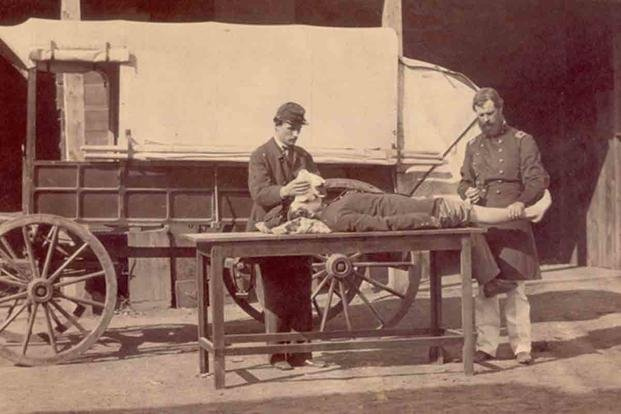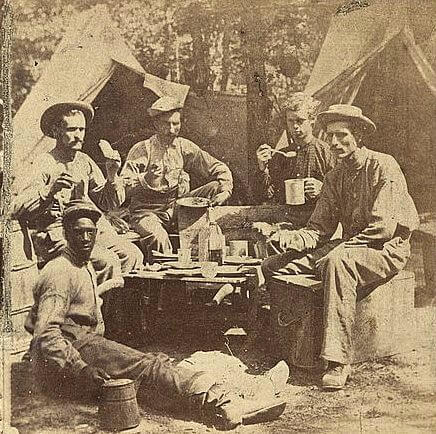Today, Salisbury steak is a familiar comfort food in American households often served with mashed potatoes and gravy, it’s a staple in diners, frozen meals, and school cafeterias alike. But behind this hearty dish lies a fascinating and unexpected history. Long before it became a dinnertime favorite, Salisbury steak was developed as a health remedy during one of the darkest periods in American history: the Civil War.
Dr. James Henry Salisbury, a physician with a deep interest in diet and digestion, believed that nutrition played a vital role in fighting disease. His solution? A simple yet effective meal centered around seasoned beef patties. Known as the “Salisbury diet,” it would not only help ill soldiers regain strength but would eventually evolve into one of America’s most beloved meals.

Born on the Battlefield: A Doctor’s Prescription
During the Civil War, disease claimed more lives than bullets. With poor sanitation and malnutrition rampant in army camps, doctors struggled to keep soldiers healthy. Dr. Salisbury, serving as a Union Army physician, became convinced that diet could dramatically improve a soldier’s resistance to illness especially chronic diarrhea, which was common and often fatal.

He observed that a diet high in lean beef and low in starches seemed to benefit sick soldiers the most. In response, he developed a special beef patty made from ground lean meat, cooked and seasoned with minimal ingredients to aid digestion. He prescribed it to soldiers in place of the usual army fare of hardtack and salted pork.
Dr. Salisbury’s goal wasn’t to create a gourmet dish. It was medicine on a plate part of a strict dietary regimen intended to restore gut health and build strength. Yet the flavor and simplicity of his beef patties caught on. After the war, veterans who credited the meal with helping them recover began preparing it at home, planting the seeds of a national culinary tradition.
Video:
The History Galley: Salisbury Steaks
The Salisbury Diet: Early Low-Carb Thinking
Long before low-carb diets became a trend, Dr. Salisbury was promoting a meat-heavy, starch-light way of eating. He warned against excessive consumption of breads, sweets, and vegetables, which he believed caused digestive issues and inflammation. His solution was straightforward: stick to beef, water, and very limited sides.
While modern nutritional science has evolved past some of his more rigid ideas, his emphasis on whole foods and gut health was ahead of its time. And his beef patty ground, shaped, and seared offered a flavorful, protein-packed solution that endured well beyond his lifetime.

From “Hamburg Steak” to Salisbury Steak
By the late 19th and early 20th centuries, minced beef patties were already a popular meal in America, known then as “Hamburg steak,” a nod to German immigrants who brought similar recipes from Europe. However, during World War I, anti-German sentiment swept across the United States. Sauerkraut was renamed “liberty cabbage,” and even common foods were rebranded.
To distance the dish from its German-sounding name, it was reintroduced to the public as “Salisbury steak,” honoring the American doctor who first prescribed it. The name stuck and so did its popularity.

A Comfort Food Legacy
In the decades that followed, Salisbury steak evolved from health remedy to classic comfort food. Recipes began to include onions, breadcrumbs, eggs, and seasonings, topped with rich brown gravy and served alongside vegetables or potatoes. It was easy to prepare, affordable, and filling perfect for working families during the Great Depression and the post-war era.
Video:
Salisbury Steak Recipe – How To Make Classic Salisbury Steak and Gravy
By the mid-20th century, it had become a fixture in frozen TV dinners, offering Americans a quick, familiar meal that evoked warmth and nostalgia. Despite its humble and medicinal beginnings, Salisbury steak earned its place at the American table.
Conclusion: More Than Just Meat and Gravy
Salisbury steak is more than just ground beef and gravy it’s a piece of American history. Born from a battlefield doctor’s mission to save lives through nutrition, it traveled from military hospitals to home kitchens, from diet plans to diner menus. While today it’s associated with comfort and nostalgia, its roots remind us that food has always been more than fuel. It can be healing, transformative, and sometimes, just what a nation needs.
The next time you sit down to enjoy a plate of Salisbury steak, you’re not just eating a meal you’re tasting a story that stretches back more than 150 years.


